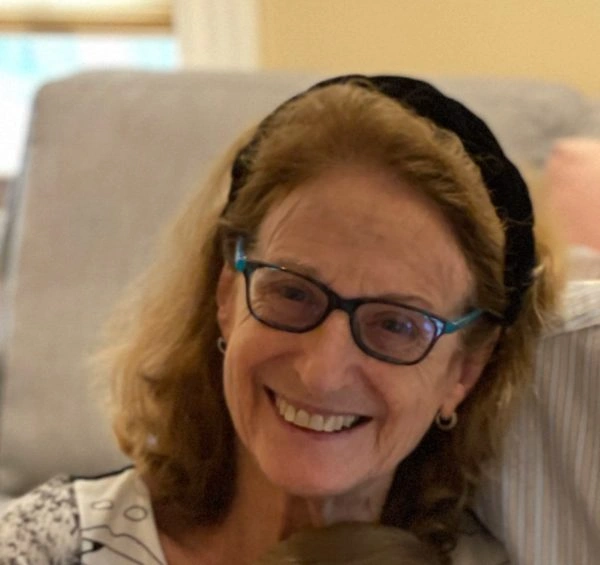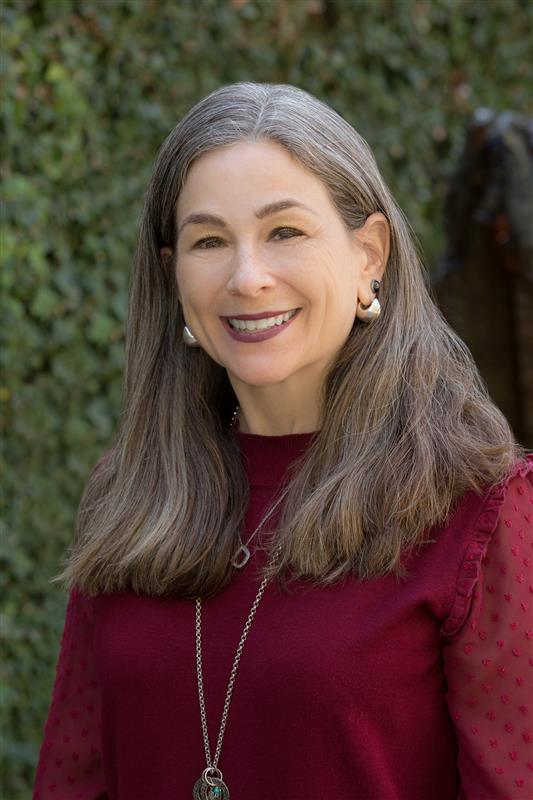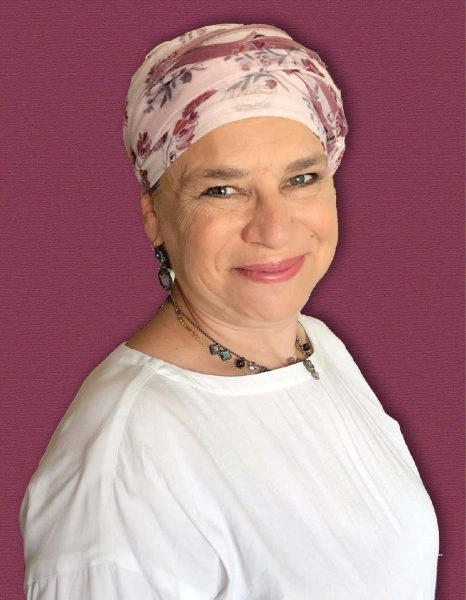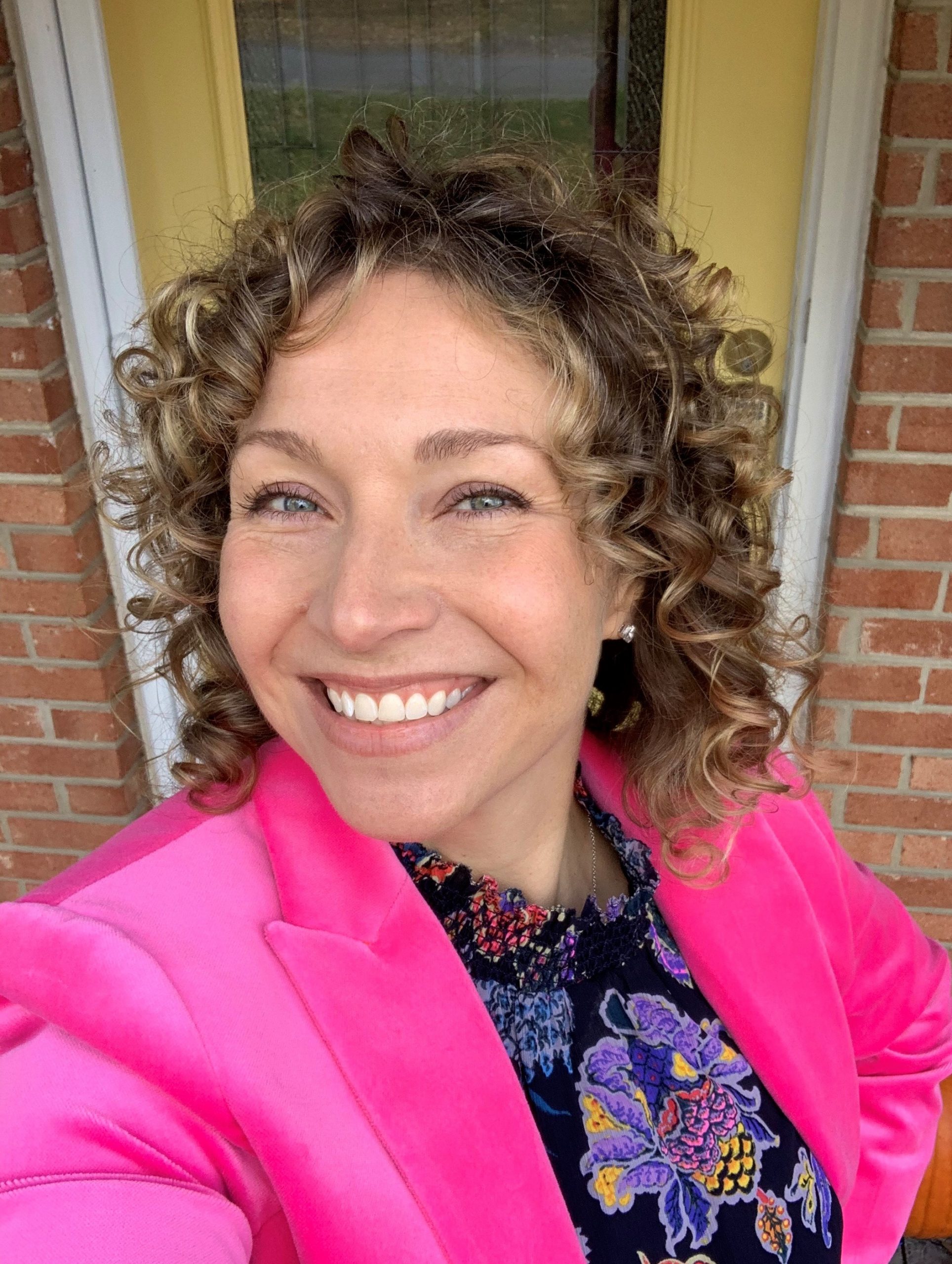Water in a ditch that is exactly in between the techum of two cities, does one need to put a partition in the water to not allow water to flow from one side to the other? Would a partition be effective? When the mishna says that one who leaves the techum gets four cubits, how do we measure those cubits? Is it four in each direction, two in each direction or can one move four in one direction? Are the cubits measured by the size of the forearm of that particular person or it by an objective measurement? Why did Rabbi Shimon compare the case of three people eating in three different techumim to the case of three courtyards? Why doesn’t he view all three courtyards as being together if each side made an eruv with the middle? Rav Yehuda and Rav Sheshet each interpret the case differently in order to answer this question. Rav Acha raises a question on each opinion and Rav Ashi answers them. In what way do the rabbis disagree with Rabbi Shimon?
Want to dedicate learning? Get started here:
Today’s daily daf tools:
Delve Deeper
Broaden your understanding of the topics on this daf with classes and podcasts from top women Talmud scholars.
New to Talmud?
Check out our resources designed to help you navigate a page of Talmud – and study at the pace, level and style that fits you.
The Hadran Women’s Tapestry
Meet the diverse women learning Gemara at Hadran and hear their stories.
Eruvin 48
מְחִיצָה שֶׁל בַּרְזֶל לְהַפְסִיקוֹ. מְחַיֵּיךְ עֲלֵיהּ רַבִּי יוֹסֵי בְּרַבִּי חֲנִינָא.
an iron partition to divide it into two separate areas, so that the residents of both places may draw water from it. Rabbi Yosei, son of Rabbi Ḥanina, would laugh at this teaching, as he deemed it unnecessary.
מַאי טַעְמָא קָא מְחַיֵּיךְ? אִילֵּימָא מִשּׁוּם דְּתָנֵי לַהּ כְּרַבִּי יוֹחָנָן בֶּן נוּרִי לְחוּמְרָא, וְאִיהוּ סְבִירָא לֵיהּ כְּרַבָּנַן לְקוּלָּא. ומִשּׁוּם דְּסָבַר לְקוּלָּא, מַאן דְּתָנֵי לְחוּמְרָא מְחַיֵּיךְ עֲלֵהּ?
The Gemara asks: Why did Rabbi Yosei, son of Rabbi Ḥanina, laugh? If you say that it is because Rabbi Ḥiyya taught the baraita stringently, in accordance with the opinion of Rabbi Yoḥanan ben Nuri, saying that ownerless objects acquire a place of residence, and Rabbi Yosei, son of Rabbi Ḥanina holds leniently, in accordance with the opinion of the Rabbis and says that those objects do not acquire residence, this is difficult. Just because he holds leniently, does he laugh at one who teaches stringently?
אֶלָּא, מִשּׁוּם דְּתַנְיָא: נְהָרוֹת הַמּוֹשְׁכִין וּמַעְיָינוֹת הַנּוֹבְעִין — הֲרֵי הֵן כְּרַגְלֵי כׇּל אָדָם.
Rather, he must have laughed for a different reason, as it was taught in a baraita: Flowing rivers and streaming springs are like the feet of all people, as the water did not acquire residence in any particular spot. Consequently, one who draws water from rivers and springs may carry it wherever he is permitted to walk, even if it had previously been located outside his Shabbat limit. According to Rabbi Yosei, son of Rabbi Ḥanina, the same halakha should apply to the water in the ditch.
וְדִילְמָא בִּמְכוּנָּסִין.
The Gemara rejects this argument: No proof can be brought from this ruling concerning rivers and springs, as perhaps we are dealing here with a ditch of still, collected water that belongs exclusively to the residents of that particular place.
אֶלָּא, מִשּׁוּם דְּקָתָנֵי: ״צָרִיךְ מְחִיצָה שֶׁל בַּרְזֶל לְהַפְסִיקוֹ״. וּמַאי שְׁנָא קָנִים דְּלָא — דְּעָיְילִי בְּהוּ מַיָּא, שֶׁל בַּרְזֶל נָמֵי — עָיְילִי בְּהוּ מַיָּא.
Rather, Rabbi Yosei, son of Rabbi Ḥanina, must have laughed for a different reason, because Rabbi Ḥiyya taught in his baraita that the ditch requires an iron partition to divide it into two separate sections. Rabbi Yosei, son of Rabbi Ḥanina, argued: Why is a partition of reeds different, that we should say it is not effective in that case? Apparently, it is because water enters it and passes from one limit to the other. But this is difficult, as even in the case of a partition of iron, water enters it and passes from one limit to another, as it cannot be hermetically sealed. If so, what does the iron accomplish that the reeds do not accomplish?
וְדִילְמָא ״צָרִיךְ וְאֵין לוֹ תַּקָּנָה״ קָאָמַר.
The Gemara raises a difficulty: Perhaps the baraita is saying as follows: A water-filled ditch that lies between two Shabbat limits requires an iron partition to divide it into two separate sections. But there is no remedy, because it is impossible to hermetically seal a partition of that kind, and therefore its water may not be used.
מִשּׁוּם דְּקַל הוּא שֶׁהֵקֵילּוּ חֲכָמִים בְּמַיִם.
Rather, you must say that Rabbi Yosei, son of Rabbi Ḥanina, laughed at Rabbi Ḥiyya’s teaching for a different reason, because the Sages were lenient with regard to water. The Rabbis said that a minimal partition suffices in the case of water. Consequently, there should be no need for an iron partition.
כִּדְרַבִּי טַבְלָא, דִּבְעָא מִינֵּיהּ רַבִּי טַבְלָא מֵרַב: מְחִיצָה תְּלוּיָה, מַהוּ שֶׁתַּתִּיר בְּחוּרְבָּה?
This is similar to the case involving Rabbi Tavla, as Rabbi Tavla asked of Rav: Does a suspended partition, i.e., a partition that is suspended and does not reach the ground, permit carrying in a ruin? Do we say that the remnants of the walls that are suspended in the air are considered as though they descend to the ground and close off the area, so that it is regarded as a private domain?
אֲמַר לֵיהּ: אֵין מְחִיצָה תְּלוּיָה מַתֶּרֶת אֶלָּא בְּמַיִם, קַל הוּא שֶׁהֵקֵילּוּ חֲכָמִים בְּמַיִם.
Rav said to him: A suspended partition of this kind permits carrying only in the case of water, as the Sages were lenient with regard to water. Just as the Sages were lenient about water with respect to a suspended partition, so too they should be lenient here and not require an iron partition; rather, a minimal partition should suffice, even one made of reeds.
וַחֲכָמִים אוֹמְרִים אֵין לוֹ אֶלָּא אַרְבַּע וְכוּ׳. רַבִּי יְהוּדָה הַיְינוּ תַּנָּא קַמָּא!
The mishna taught: And the Rabbis say that if a person is sleeping at the onset of Shabbat and has no intention of acquiring residence in his location, he has only four cubits, whereas Rabbi Yehuda says he can walk four cubits in any direction he chooses. The Gemara asks: What is the dispute? The opinion of Rabbi Yehuda is the same as that of the first tanna, i.e., the Rabbis.
אָמַר רָבָא: שְׁמוֹנֶה עַל שְׁמוֹנֶה אִיכָּא בֵּינַיְיהוּ. תַּנְיָא נָמֵי הָכִי: יֵשׁ לוֹ שְׁמוֹנֶה עַל שְׁמוֹנֶה, דִּבְרֵי רַבִּי מֵאִיר.
Rava said: There is a practical difference between them, as the Rabbis permit him to carry in an area of eight by eight cubits. Rabbi Yehuda maintains that he has only four cubits, in the direction of his choosing, whereas according to the Rabbis he has four cubits in every direction, which totals an area of eight by eight cubits. That was also taught explicitly in a baraita: He has eight by eight cubits; this is the statement of Rabbi Meir, which is the opinion of the Rabbis of the mishna.
וְאָמַר רָבָא: מַחֲלוֹקֶת לְהַלֵּךְ, אֲבָל לְטַלְטֵל דִּבְרֵי הַכֹּל: אַרְבַּע אַמּוֹת — אִין, טְפֵי — לָא.
And Rava further stated: This dispute between Rabbi Meir and Rabbi Yehuda relates only to walking, but as for carrying objects, all agree that to carry them four cubits is indeed permitted; but to carry them more than that is not.
וְהָנֵי אַרְבַּע אַמּוֹת הֵיכָא כְּתִיבָא?
The Gemara inquires about the basis of this law: These four cubits within which a person is always permitted to walk on Shabbat, where are they written in the Torah?
כִּדְתַנְיָא: ״שְׁבוּ אִישׁ תַּחְתָּיו״ — כְּתַחְתָּיו. [וְכַמָּה תַּחְתָּיו] גּוּפוֹ שָׁלֹשׁ אַמּוֹת, וְאַמָּה כְּדֵי לִפְשׁוֹט יָדָיו וְרַגְלָיו — דִּבְרֵי רַבִּי מֵאִיר. רַבִּי יְהוּדָה אוֹמֵר: גּוּפוֹ שָׁלֹשׁ אַמּוֹת, וְאַמָּה כְּדֵי שֶׁיִּטּוֹל חֵפֶץ מִתַּחַת מַרְגְּלוֹתָיו וּמַנִּיחַ תַּחַת מְרַאֲשׁוֹתָיו.
The Gemara answers: As it was taught in a baraita: The verse “Remain every man in his place; let no man go out of his place on the seventh day” (Exodus 16:29), means one must restrict his movement to an area equal to his place. And how much is the area of his place? A person’s body typically measures three cubits, and an additional cubit is needed in order to allow him to spread out his hands and feet, this is the statement of Rabbi Meir. Rabbi Yehuda says: A person’s body measures three cubits, and an additional cubit is needed in order to allow him to pick up an object from under his feet and place it under his head, meaning, to give him room to maneuver.
מַאי בֵּינַיְיהוּ, אִיכָּא בֵּינַיְיהוּ: אַרְבַּע אַמּוֹת מְצוּמְצָמוֹת.
The Gemara asks: What is the practical difference between them? The Gemara answers: There is a practical difference between them in that Rabbi Yehuda provides him with exactly four cubits but no more; whereas Rabbi Meir maintains that we do not restrict him in this manner, but rather he is provided with expansive cubits, i.e., enough room to spread out his hands and feet, which measures slightly more than four cubits.
אֲמַר לֵיהּ רַב מְשַׁרְשְׁיָא לִבְרֵיהּ: כִּי עָיְילַתְּ לְקַמֵּיהּ דְּרַב פָּפָּא, בְּעִי מִינֵּיהּ: אַרְבַּע אַמּוֹת שֶׁאָמְרוּ, בְּאַמָּה דִּידֵיהּ יָהֲבִינַן לֵיהּ, אוֹ בְּאַמָּה שֶׁל קֹדֶשׁ יָהֲבִינַן לֵיהּ?
Rav Mesharshiya said to his son: When you come before Rav Pappa, inquire of him as follows: The four cubits [ammot] mentioned here, do we grant them to each person measured according to his own forearm [amma], i.e., the distance from his elbow to the tip of his index finger, or do we grant them measured according to the cubit [amma] used for consecrated property, i.e., a standard cubit of six medium handbreadths for everyone?
אִם אָמַר לָךְ: אַמּוֹת שֶׁל קֹדֶשׁ יָהֲבִינַן לֵיהּ — עוֹג מֶלֶךְ הַבָּשָׁן מַה תְּהֵא עָלָיו? וְאִם אָמַר לָךְ בְּאַמָּה דִּידֵיהּ יָהֲבִינַן לֵיהּ, אֵימָא לֵיהּ: מַאי טַעְמָא לָא קָתָנֵי לַהּ גַּבֵּי ״יֵשׁ שֶׁאָמְרוּ הַכֹּל לְפִי מַה שֶּׁהוּא אָדָם״?
If he said to you that we provide him four cubits measured according to the standard cubit used for consecrated property, what will be with regard to Og, king of the Bashan, who is much larger than this? And if he said to you that we provide him four cubits measured according to his own forearm, say to him: Why was this halakha not taught together with the other matters whose measures are determined by the specific measure of the person involved, in the mishna that teaches: These are matters with regard to which they stated measures all in accordance with the specific measure of the person involved. This means that the measures are not fixed, but rather change in accordance with the person in question. If the four cubits are measured according to each person’s forearm, this law should have been included in the mishna.
כִּי אֲתָא לְקַמֵּיהּ דְּרַב פָּפָּא, אֲמַר לֵיהּ: אִי דָּיְיקִינַן כּוּלֵּא הַאי, לָא הֲוֵי תָּנֵינַן.
When Rav Mesharshiya’s son came before Rav Pappa, the latter said to him: Were we to be so precise, we would not be able to learn anything at all, as we would be too busy answering such questions.
לְעוֹלָם בְּאַמָּה דִּידֵיהּ יָהֲבִינַן לֵיהּ. וּדְקָא קַשְׁיָא לָךְ: מַאי טַעְמָא לָא קָתָנֵי גַּבֵּי ״יֵשׁ שֶׁאָמְרוּ״? — דְּלָא פְּסִיקָא לֵיהּ, מִשּׁוּם דְּאִיכָּא נַנָּס בְּאֵבָרָיו.
In fact, we grant him four cubits measured according to his own forearm. And as for that which was difficult for you, why was this law not taught in the mishna that teaches: These are matters with regard to which they stated measures all in accordance with the specific measure of the person involved? It is because this law is not absolutely clear-cut. It occasionally must be adjusted, since there may be a person whose limbs are small in relation to his body. With regard to such a person, we do not measure four cubits according to the size of his own forearm, but rather by the standard cubits used for consecrated property.
הָיוּ שְׁנַיִם מִקְצָת אַמּוֹתָיו שֶׁל זֶה וְכוּ׳. לְמָה לֵיהּ לְמֵימַר ״לְמָה הַדָּבָר דּוֹמֶה״?
The mishna taught: If there were two people positioned in a way that part of the four cubits of the one were subsumed within the four cubits of the other, they each may bring food and eat together in the shared area in the middle. Rabbi Shimon likened this case to that of three courtyards that open one into another, where the two outer courtyards established an eiruv with the middle one. The Gemara asks: Why does Rabbi Shimon need to offer an analogy and say: To what may this be likened, and thus connect our case to a different issue?
הָכִי קָאֲמַר לְהוּ רַבִּי שִׁמְעוֹן לְרַבָּנַן: מִכְּדִי לְמָה הַדָּבָר דּוֹמֶה, לְשָׁלֹשׁ חֲצֵירוֹת הַפְּתוּחוֹת זוֹ לָזוֹ, וּפְתוּחוֹת לִרְשׁוּת הָרַבִּים, מַאי שְׁנָא הָתָם דִּפְלִיגִיתוּ, וּמַאי שְׁנָא הָכָא דְּלָא פְּלִיגִיתוּ?
The Gemara explains: This is what Rabbi Shimon said to the Rabbis: After all, to what is this similar? To three courtyards that open into one another, and that also open into a public domain. What is different there that you disagree with me and say that it is prohibited to carry from any one courtyard to any other, and what is different here that you do not disagree with me?
וְרַבָּנַן: הָתָם אָוְושִׁי דָּיוֹרִין. הָכָא לָא אָוְושִׁי דָּיוֹרִין.
And how do the Rabbis reply? There the residents of the courtyards are numerous, and some might come to carry objects in a place where it is prohibited to do so; whereas here the residents are not numerous, and a mere three people can warn each other against Shabbat desecration.
וּשְׁתַּיִם הַחִיצוֹנוֹת כּוּ׳. וְאַמַּאי? כֵּיוָן דְּעָרְבִי לְהוּ חִיצוֹנוֹת בַּהֲדֵי אֶמְצָעִית, הָוְיָא לְהוּ חֲדָא!
The mishna taught: If the residents of the two outer courtyards established an eiruv with the middle one, it is permitted to carry from the middle one to the two outer ones, and it is permitted to carry from the two outer ones to the middle one. And it is prohibited to carry from one of the two outer courtyards to the other, as they did not establish a joint eiruv. The Gemara asks: Why is it prohibited? Since the residents of the outer courtyards established an eiruv with the middle one, they are as one, and consequently, they should all be permitted with one another.
אָמַר רַב יְהוּדָה: כְּגוֹן שֶׁנָּתְנָה אֶמְצָעִית עֵירוּבָהּ בָּזוֹ וְעֵירוּבָהּ בָּזוֹ.
Rav Yehuda said: The mishna is referring to a case where the two outer courtyards did not place their eiruv in the middle courtyard; rather, to a case where the residents of the middle courtyard placed its first eiruv in this courtyard and its second eiruv in that courtyard, so that the eiruv of each of the other courtyards is not in the middle courtyard.
וְרַב שֵׁשֶׁת אָמַר: אֲפִילּוּ תֵּימָא שֶׁנָּתְנוּ עֵירוּבָן בָּאֶמְצָעִית, כְּגוֹן שֶׁנְּתָנוּהוּ
And Rav Sheshet said: Even if you say that the residents of each of the outer courtyards placed their eiruv in the middle courtyard, they are still not considered a single courtyard, as we are dealing with a case where they placed each eiruv
בִּשְׁנֵי בָתִּים.
in two separate houses, and consequently the two outer courtyards do not join together and become as one.
כְּמַאן? כְּבֵית שַׁמַּאי, דְּתַנְיָא: חֲמִשָּׁה שֶׁגָּבוּ אֶת עֵירוּבָן וּנְתָנוּהוּ בִּשְׁנֵי כֵלִים, בֵּית שַׁמַּאי אוֹמְרִים: אֵין עֵירוּבָן עֵירוּב. וּבֵית הִלֵּל אוֹמְרִים: עֵירוּבָן עֵירוּב.
The Gemara asks: In accordance with whose opinion did Rav Sheshet state that an eiruv placed in two houses, even within the same courtyard, does not join the houses together? He must have said this in accordance with the opinion of Beit Shammai, as it was taught in a baraita: With regard to five people who collected their eiruv and placed it in two separate utensils, even in a single house, Beit Shammai say: Their eiruv is not a valid eiruv, as the two parts of the eiruv have not been deposited in the same place, and Beit Hillel say: Their eiruv is a valid eiruv as long as the entire eiruv was deposited in a single domain.
אֲפִילּוּ תֵּימָא בֵּית הִלֵּל, עַד כָּאן לָא קָאָמְרִי בֵּית הִלֵּל הָתָם — אֶלָּא בִּשְׁנֵי כֵלִים בְּבַיִת אֶחָד, אֲבָל בִּשְׁנֵי בָתִּים, לָא.
The Gemara rejects this argument: Even if you say that this is in accordance with the opinion of Beit Hillel, Beit Hillel may have stated their opinion only there, with regard to two utensils that are located in one house and consequently, they join together. However, if the two utensils are located in two separate houses, even Beit Hillel agree that the eiruv is not valid.
אֲמַר לֵיהּ רַב אַחָא בְּרֵיהּ דְּרַב אַוְיָא לְרַב אָשֵׁי: לְרַב יְהוּדָה קַשְׁיָא וּלְרַב שֵׁשֶׁת קַשְׁיָא. לְרַב יְהוּדָה קַשְׁיָא דְּאָמַר: כְּגוֹן שֶׁנָּתְנָה אֶמְצָעִית עֵירוּבָהּ בָּזוֹ וְעֵירוּבָהּ בָּזוֹ, וְכֵיוָן דְּעֵירְבָה אֶמְצָעִית בַּהֲדֵי חִיצוֹנָה הָוְיָא לֵיהּ חֲדָא, וְכִי הָדְרָה וְעָרְבָה בַּהֲדֵי אִידַּךְ — שְׁלִיחוּתָהּ עָבְדָה.
Rav Aḥa, son of Rav Avya, said to Rav Ashi: The explanation of Rav Yehuda is difficult and the explanation of Rav Sheshet is difficult. The explanation of Rav Yehuda is difficult, as he said that it is speaking about a case where the middle courtyard put its first eiruv in the one courtyard and its second eiruv in the other courtyard. However, once the middle courtyard establishes an eiruv with one of the outer ones, they are regarded as one, so that when it later establishes an eiruv with the other outer courtyard, it acts also on behalf of the first outer courtyard, as both of them are treated like a single courtyard.
וּלְרַב שֵׁשֶׁת קַשְׁיָא: תֶּיהְוֵי כַּחֲמִשָּׁה שֶׁשְּׁרוּיִין בְּחָצֵר אַחַת, וְשָׁכַח אֶחָד מֵהֶן וְלֹא עֵירַב — דְּאָסְרִי אַהֲדָדֵי!
And the explanation of Rav Sheshet is difficult. Since the two outer courtyards placed their respective eiruvin in the middle courtyard, all are regarded as residents of the middle courtyard. And since each of the outer courtyards placed its eiruv in a different house, the case should be treated like that of five people who lived in the same courtyard, one of whom forgot and did not join the eiruv, where they all prohibit one another to carry in the courtyard. Similarly in this case, all should be prohibited to carry in the middle courtyard, the residents of the middle courtyard as well as the residents of the outer courtyards.
אֲמַר לֵיהּ רַב אָשֵׁי: לָא לְרַב יְהוּדָה קַשְׁיָא וְלָא לְרַב שֵׁשֶׁת קַשְׁיָא. לְרַב יְהוּדָה לָא קַשְׁיָא: כֵּיוָן דְּעֵירְבָה לַהּ אֶמְצָעִית בַּהֲדֵי חִיצוֹנָה, וּשְׁתַּיִם חִיצוֹנוֹת בַּהֲדֵי הֲדָדֵי לָא עֵירְבוּ — גַּלְּיָא דַּעְתֵּיהּ דִּבְהָא נִיחָא לֵיהּ, וּבְהָא לָא נִיחָא לֵיהּ.
Rav Ashi said to him: It is not difficult according to the explanation of Rav Yehuda and it is not difficult according to the explanation of Rav Sheshet. It is not difficult according to the explanation of Rav Yehuda, since the residents of the middle courtyard established an eiruv with each of the two outer courtyards, and the residents of the two outer courtyards did not establish an eiruv with one another. The residents of each of the outer courtyards indicated that it desired to join with the middle courtyard, but did not desire to join with the other outer courtyard. Since the residents of the outer courtyards demonstrated that that they did not want to join together and form a common eiruv, they cannot be forced to do so.
וּלְרַב שֵׁשֶׁת לָא קַשְׁיָא: אִם אָמְרוּ דָּיוֹרִין לְהָקֵל, יֹאמְרוּ דָּיוֹרִין לְהַחְמִיר?!
And it is not difficult according to the explanation of Rav Sheshet. If they said that the people living in the outer courtyards are considered as residents of the middle courtyard as a leniency, so that they should be permitted to carry in the middle courtyard, does this mean that they will say that they are considered residents of the middle courtyard also as a stringency, so that they should be prohibited from carrying in the middle courtyard as if they live there?
אָמַר רַב יְהוּדָה אָמַר רַב: זוֹ דִּבְרֵי רַבִּי שִׁמְעוֹן. אֲבָל חֲכָמִים אוֹמְרִים: רְשׁוּת אַחַת מְשַׁמֶּשֶׁת לִשְׁתֵּי רְשׁוּיוֹת. אֲבָל לָא שְׁתֵּי רְשׁוּיוֹת מְשַׁמְּשׁוֹת לִרְשׁוּת אַחַת.
Rav Yehuda said that Rav said: This statement in the mishna, that objects may be carried from either of the outer courtyards into the middle courtyard and also from the middle courtyard into either of the outer courtyards, is the statement of, i.e., in accordance with the opinion of, Rabbi Shimon. But the Rabbis say: One domain serves two domains. That is to say, it is permitted to carry objects from either of the outer courtyards into the inner one, as no prohibition is imposed upon the outer courtyards, given that both established an eiruv with the middle courtyard. But two domains do not serve one domain, meaning that it is prohibited to carry objects from the middle courtyard into either of the two outer courtyards. The utensils of the middle courtyard are drawn after the other two, meaning that were he to bring them into one of the outer courtyards, he would be regarded as having removed them from the other.
כִּי אַמְרִיתַהּ קַמֵּיהּ דִּשְׁמוּאֵל, אֲמַר לִי:
Rav Yehuda relates: When I recited this teaching before Shmuel, he said to me:






















